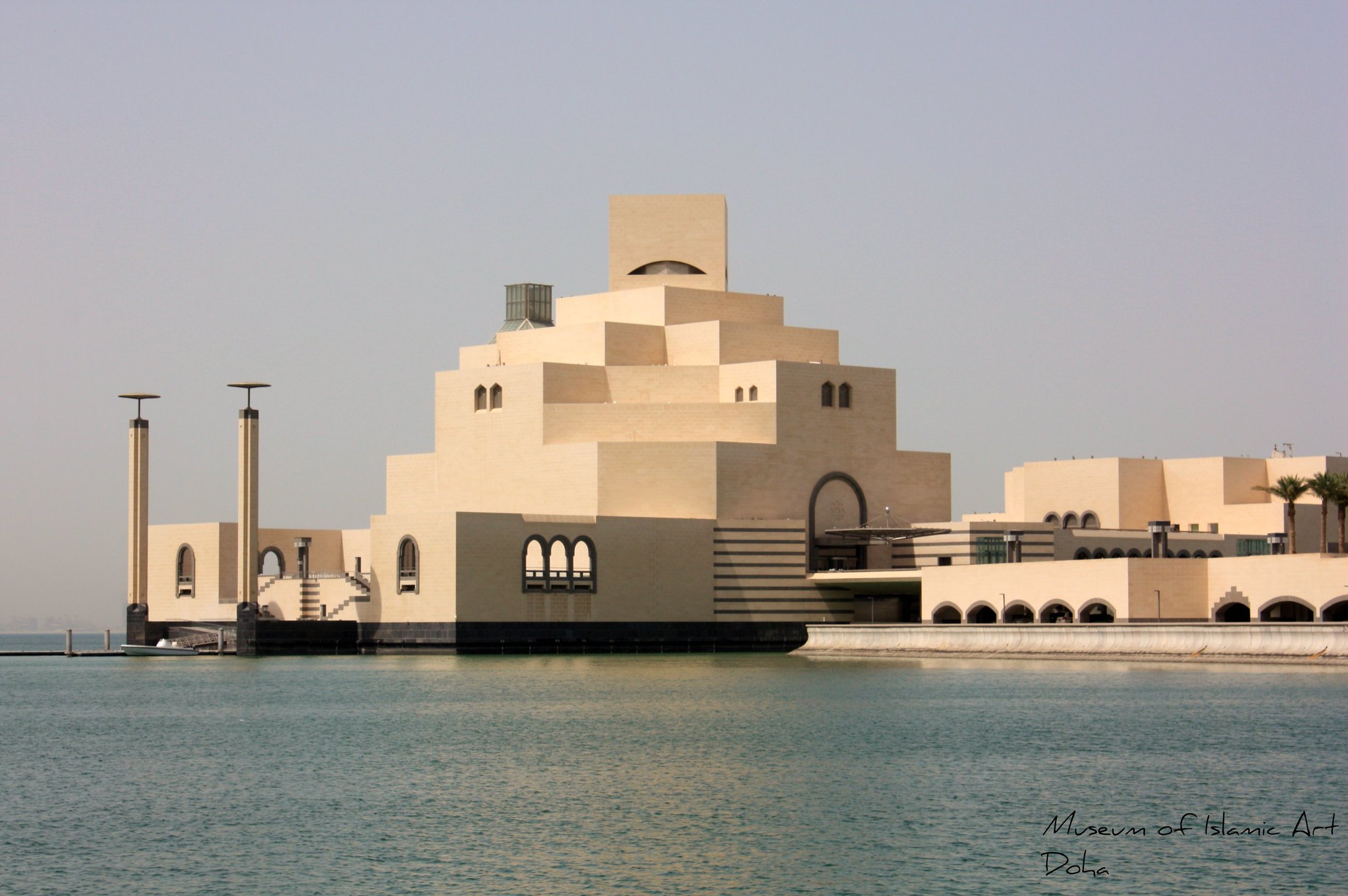The Museum of Islamic Art, located in Doha, Qatar, is a world-renowned institution dedicated to showcasing the rich cultural heritage of Islamic art and artifacts. Designed by acclaimed architect I.M. Pei, the museum’s striking geometric structure stands on an artificial island in Doha Bay, offering panoramic views of the city’s skyline. Opened in 2008, the museum houses an extensive collection spanning 1,400 years of Islamic art, including ceramics, textiles, metalwork, manuscripts, and scientific instruments from across the Islamic world. With its innovative exhibitions, educational programs, and state-of-the-art conservation facilities, the Museum of Islamic Art serves as a global center for the study, preservation, and appreciation of Islamic art and culture.
The Museum of Islamic Art in Doha, Qatar, stands as a testament to the rich cultural heritage of the Islamic world and the innovative spirit of modern architecture. Designed by the renowned architect I.M. Pei, this stunning structure has become an iconic landmark on the Doha waterfront, captivating visitors with its bold geometric forms and intricate details.
At first glance, the museum appears as a series of cubic forms stacked and arranged in a seemingly random pattern. However, upon closer inspection, one can appreciate the careful thought and precision that went into every aspect of its design. Pei, who was 91 years old when he took on this project, spent months studying Islamic architecture before putting pen to paper. His goal was to create a building that would honor the traditions of Islamic art while also pushing the boundaries of contemporary design.
The result is a masterpiece that seamlessly blends ancient and modern elements. The museum’s exterior is clad in light-colored limestone, which not only withstands the harsh desert climate but also reflects the changing colors of the sky throughout the day. This interplay of light and shadow creates a dynamic visual experience that evolves as the sun moves across the sky.
One of the most striking features of the museum is its central atrium, which soars five stories high and is crowned by a dome inspired by traditional Islamic architecture. The dome’s intricate geometric patterns filter sunlight into the space, creating a mesmerizing play of light and shadow that dances across the walls and floors. This central space serves as the heart of the museum, connecting the various galleries and providing visitors with a moment of awe and contemplation.
As visitors move through the museum, they encounter a series of carefully crafted spaces that showcase the diversity and beauty of Islamic art. The galleries are arranged chronologically and thematically, allowing visitors to trace the evolution of Islamic art and culture across different regions and time periods. The architecture itself becomes part of the exhibition, with each space designed to complement and enhance the artworks on display.
One of the most innovative aspects of the museum’s design is its use of natural light. Pei incorporated a series of strategically placed windows and skylights throughout the building, allowing natural light to filter into the galleries and illuminate the artworks. This not only creates a more pleasant viewing experience but also helps to conserve energy and reduce the museum’s environmental impact.
The museum’s location on an artificial island in Doha Bay adds another layer of complexity to its design. Pei wanted to create a building that would appear to rise from the water, much like a mirage in the desert. To achieve this effect, he incorporated a series of reflecting pools and water features around the base of the building, blurring the line between land and sea.
The Museum of Islamic Art is more than just a beautiful building; it’s a cultural bridge that connects the past with the present and the East with the West. Its unique design has not only put Qatar on the global cultural map but has also inspired a new generation of architects and artists to explore the rich traditions of Islamic art and architecture.
As visitors leave the museum, they can’t help but feel a sense of wonder and appreciation for the ingenuity and creativity that went into its design. The Museum of Islamic Art stands as a shining example of how architecture can transcend mere functionality to become a work of art in its own right, inviting us to explore, learn, and marvel at the beauty of human creativity.
The Museum of Islamic Art stands as a testament to the rich cultural heritage and artistic achievements of the Islamic world. Its extensive collection, spanning over 1,400 years and diverse geographical regions, offers visitors a comprehensive view of Islamic art and its evolution. The museum’s striking architecture, designed by I.M. Pei, serves as a modern interpretation of traditional Islamic design principles, creating a harmonious blend of past and present. Through its exhibitions, educational programs, and research initiatives, the Museum of Islamic Art plays a crucial role in preserving, showcasing, and promoting the understanding of Islamic art and culture on a global scale. As a cultural landmark and center for scholarship, it continues to inspire and educate visitors while fostering cross-cultural dialogue and appreciation for the enduring legacy of Islamic artistic traditions.

